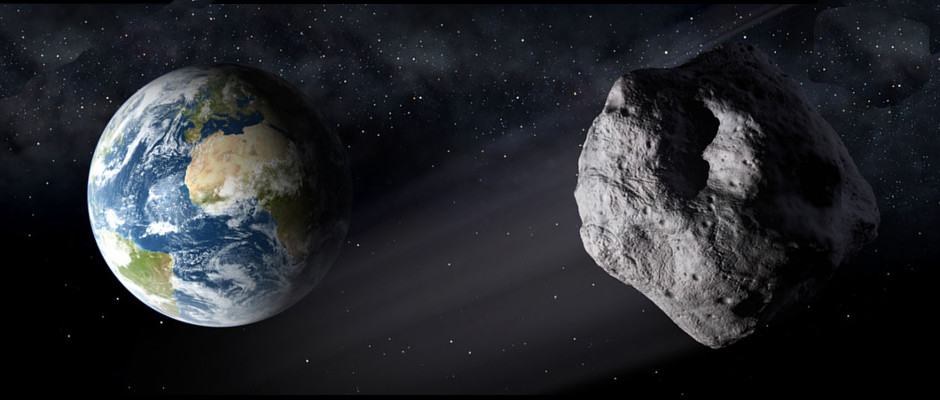Explained: Why most asteroids do not pose a threat to Earth
Asteroid 465824 2010 FR, “twice as big as the Pyramid of Giza” and expected to cross the Earth’s orbit September 6, has invited similar reactions– clinching alarming descriptions such as “rocky horror” and “dangerous asteroid”.
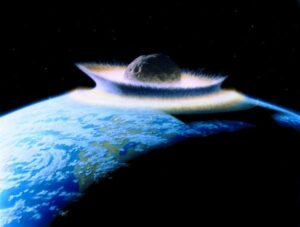 New Delhi, September 06, 2020: Once every few days, news headlines announce the approach of a new asteroid towards Earth, and social media platforms become abuzz with panicky users talking about doomsday scenarios.
New Delhi, September 06, 2020: Once every few days, news headlines announce the approach of a new asteroid towards Earth, and social media platforms become abuzz with panicky users talking about doomsday scenarios.
Asteroid 465824 2010 FR, “twice as big as the Pyramid of Giza” and expected to cross the Earth’s orbit on September 6, has invited similar reactions– clinching alarming descriptions such as “rocky horror” and “dangerous asteroid”.
In reality, a civilisation-threatening risk from space objects is extremely rare– occurring once every few million years, according to NASA.
The space agency has also played down the risk from 465824 2010 FR, saying: “Our #PlanetaryDefense experts are not worried about asteroid 2010 FR and you shouldn’t be either because it has zero chance of hitting Earth. It will safely pass by our planet on Sept. 6 more than 4.6 million miles away—that’s more than 19 times the distance of our Moon!”
What is an asteroid?
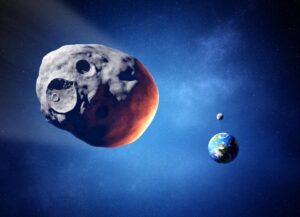 Asteroids are rocky objects that orbit the Sun, much smaller than planets. They are also called minor planets. According to NASA, 994,383 is the count for known asteroids, the remnants from the formation of the solar system over 4.6 billion years ago.
Asteroids are rocky objects that orbit the Sun, much smaller than planets. They are also called minor planets. According to NASA, 994,383 is the count for known asteroids, the remnants from the formation of the solar system over 4.6 billion years ago.
Asteroids are divided into three classes. First, those found in the main asteroid belt between Mars and Jupiter, which is estimated to contain somewhere between 1.1-1.9 million asteroids.
The second group is that of trojans, which are asteroids that share an orbit with a larger planet. NASA reports the presence of Jupiter, Neptune and Mars trojans. In 2011, they reported an Earth trojan as well.
The third classification is Near-Earth Asteroids (NEA), which have orbits that pass close by the Earth. Those that cross the Earth’s orbit are called Earth-crossers. More than 10,000 such asteroids are known, out of which over 1,400 are classified as potentially hazardous asteroids (PHAs).
What is the level of threat that Earth faces from asteroids?
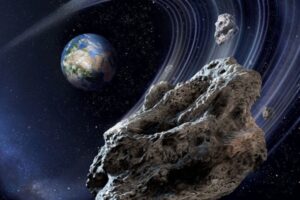 According to The Planetary Society, there are estimated to be around 1 billion asteroids having a diameter greater than 1 metre. The ones that can cause significant damage upon impacting Earth are larger than 30 metres.
According to The Planetary Society, there are estimated to be around 1 billion asteroids having a diameter greater than 1 metre. The ones that can cause significant damage upon impacting Earth are larger than 30 metres.
As per NASA’s Near-Earth Object Observations Programme, asteroids that are 140 metres or larger (bigger than a small football stadium) are of “the greatest concern” due to the level of devastation their impact is capable of causing. However, it has been pointed out that no asteroid larger than 140 metres has a “significant” chance of hitting the Earth for the next 100 years.
A meteoroid– a small particle from a comet or asteroid – the size of a football field impacts Earth every 2,000 years, causing serious damage to the area it hits.
Asteroids the size of 1 km or more in diameter, capable of causing catastrophic worldwide effects, are extremely rare, impacting our planet once every 100,000 years. The probability of comets causing such damage is even lower, around once every 500,000 years.
The Chicxulub impactor, the 10-kilometre diameter large space object that caused the sudden extinction of most dinosaur species, hit our planet 66 million years ago.
Are all space objects dangerous?
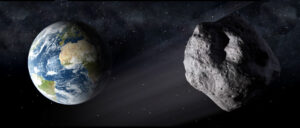 No. According to NASA, every single day, the Earth receives more than 100 tonnes of dust and sand-sized particles from space.
No. According to NASA, every single day, the Earth receives more than 100 tonnes of dust and sand-sized particles from space.
Every year, a car-sized asteroid enters our planet’s atmosphere, and forms an impressive fireball. It burns up before reaching the Earth’s surface.
Is there a way to deflect asteroids?
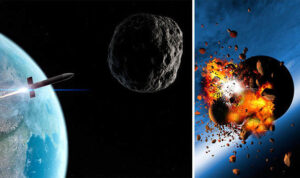 Over the years, scientists have suggested different ways to ward off more serious threats, such as blowing up the asteroid before it reaches Earth, or deflecting it off its Earth-bound course by hitting it with a spacecraft.
Over the years, scientists have suggested different ways to ward off more serious threats, such as blowing up the asteroid before it reaches Earth, or deflecting it off its Earth-bound course by hitting it with a spacecraft.
The most drastic measure undertaken so far is the Asteroid Impact and Deflection Assessment (AIDA), which includes NASA’s Double Asteroid Redirection Test (DART) mission and the European Space Agency’s (ESA) Hera. The mission’s target is Didymos, a binary near-Earth asteroid, one of whose bodies is of the size that could pose a significant threat to Earth.
In 2018, NASA announced that it had started the construction of DART, which is scheduled to launch in 2021 with an aim to slam into the smaller asteroid of the Didymos system at around 6 km per second in 2022. Hera, which is scheduled to launch in 2024, will arrive at the Didymos system in 2027 to measure the impact crater produced by the DART collision and study the change in the asteroid’s orbital trajectory.
In a recent tweet, NASA said: “Yes, asteroids safely pass by Earth all the time, and there is no known asteroid impact threat for the next 100 years. Regardless, stories sometimes surface with alarming headlines surrounding particular asteroids, so we like to reassure everyone when we see such conversations.”


